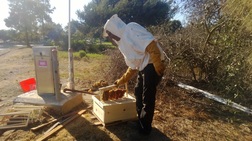
By Jade Dean
Earlier this month, we identified a bee hive in Phase III at the Colorado Lagoon. In order to protect our employees and volunteers, we enlisted the help of a local beekeeper to remove the hive in a safe and ecologically conscious manner. The removal of the hive was a fascinating process. First, the beekeeper used smoke to disorient the bees and to mask their chemical signals. Once the bees became lethargic, the beekeeper opened the hive and applied a honey water mixture to it. This mixture causes the bees to lick themselves, further distracting themselves before the beekeeper extracts them from the hive. The beekeeper then carefully removes the honeycomb and inserts it in the frame, where it is held in place by rubber bands. Once the honeycomb has stabilized in the frame, the beekeeper inserts it into a bee box. Click "Read More" to see pictures of the process!
Earlier this month, we identified a bee hive in Phase III at the Colorado Lagoon. In order to protect our employees and volunteers, we enlisted the help of a local beekeeper to remove the hive in a safe and ecologically conscious manner. The removal of the hive was a fascinating process. First, the beekeeper used smoke to disorient the bees and to mask their chemical signals. Once the bees became lethargic, the beekeeper opened the hive and applied a honey water mixture to it. This mixture causes the bees to lick themselves, further distracting themselves before the beekeeper extracts them from the hive. The beekeeper then carefully removes the honeycomb and inserts it in the frame, where it is held in place by rubber bands. Once the honeycomb has stabilized in the frame, the beekeeper inserts it into a bee box. Click "Read More" to see pictures of the process!

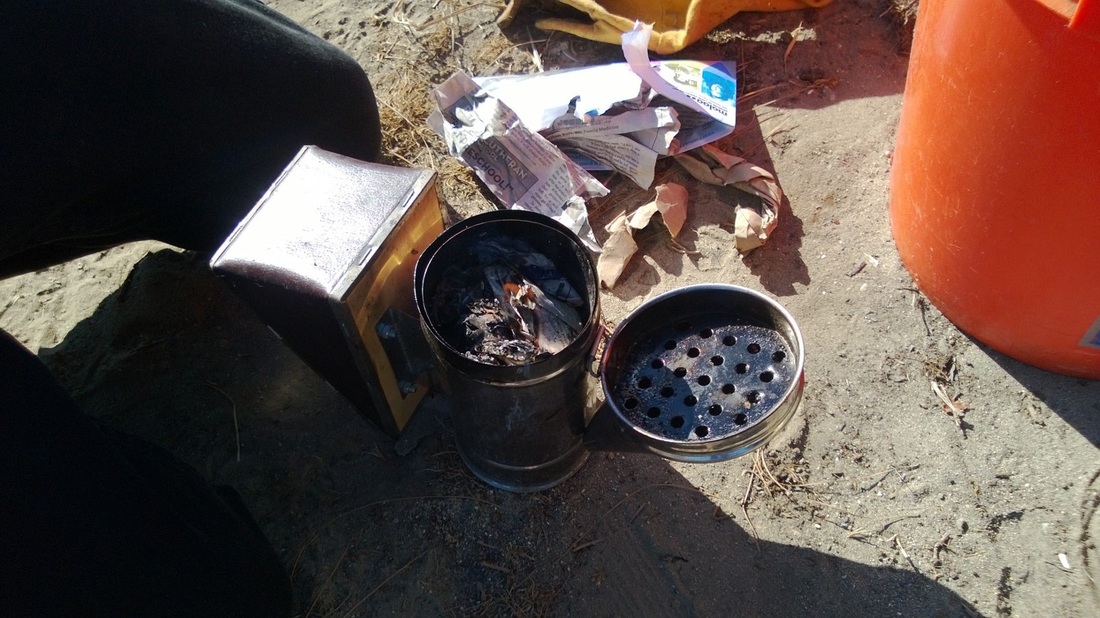
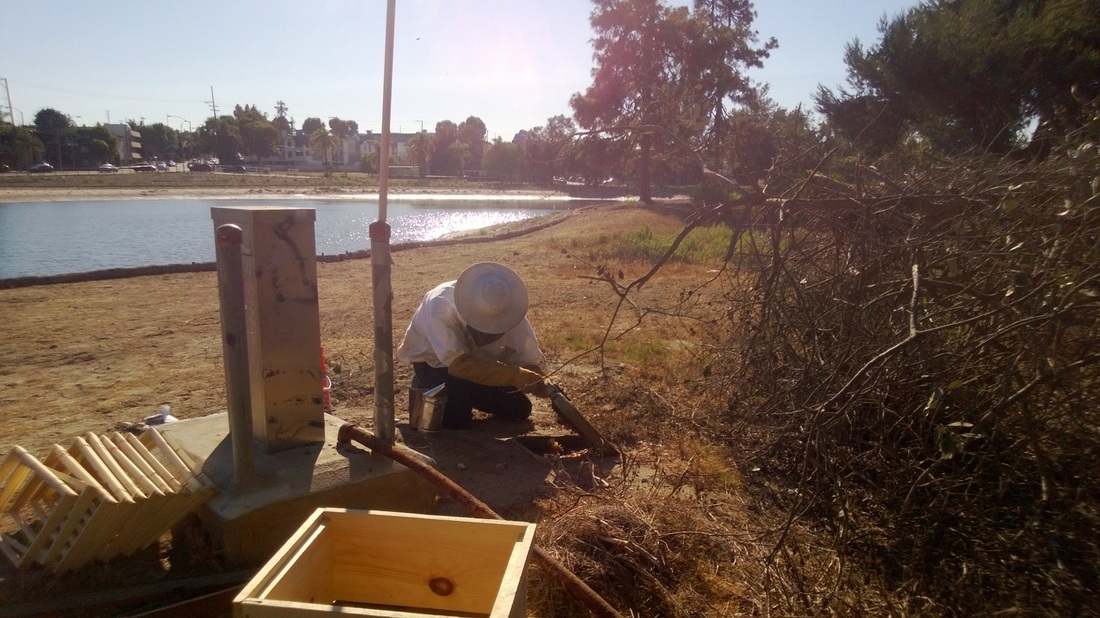
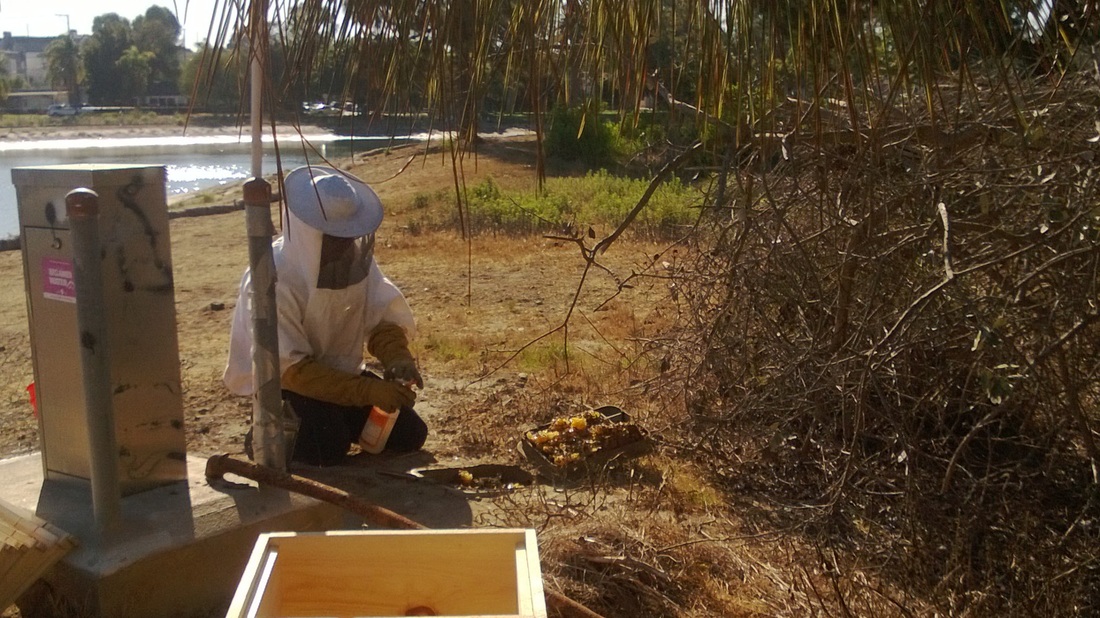
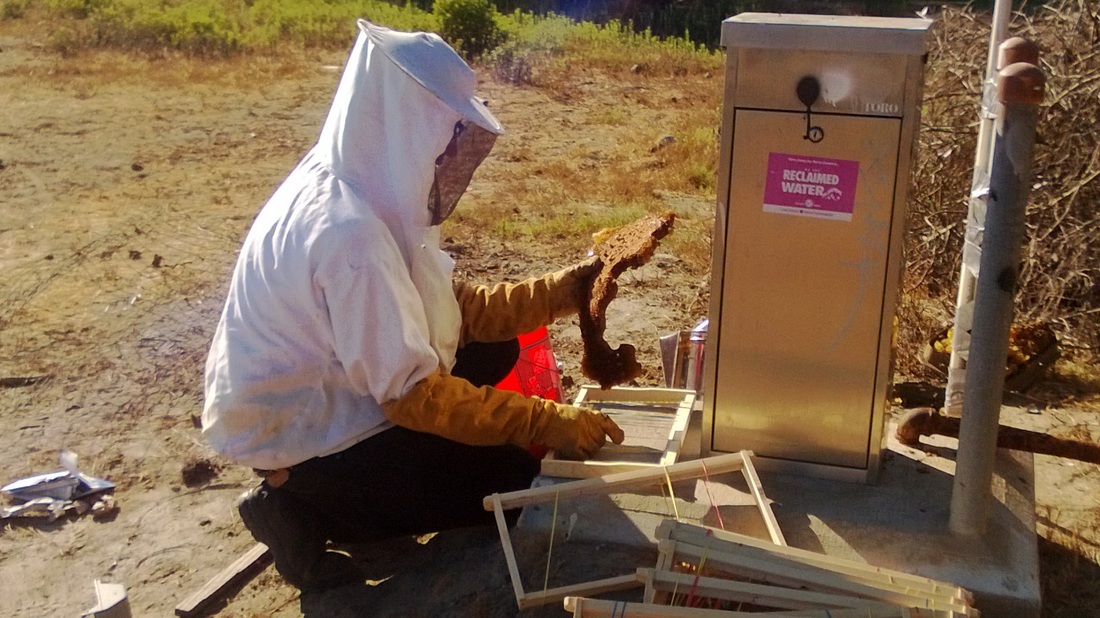
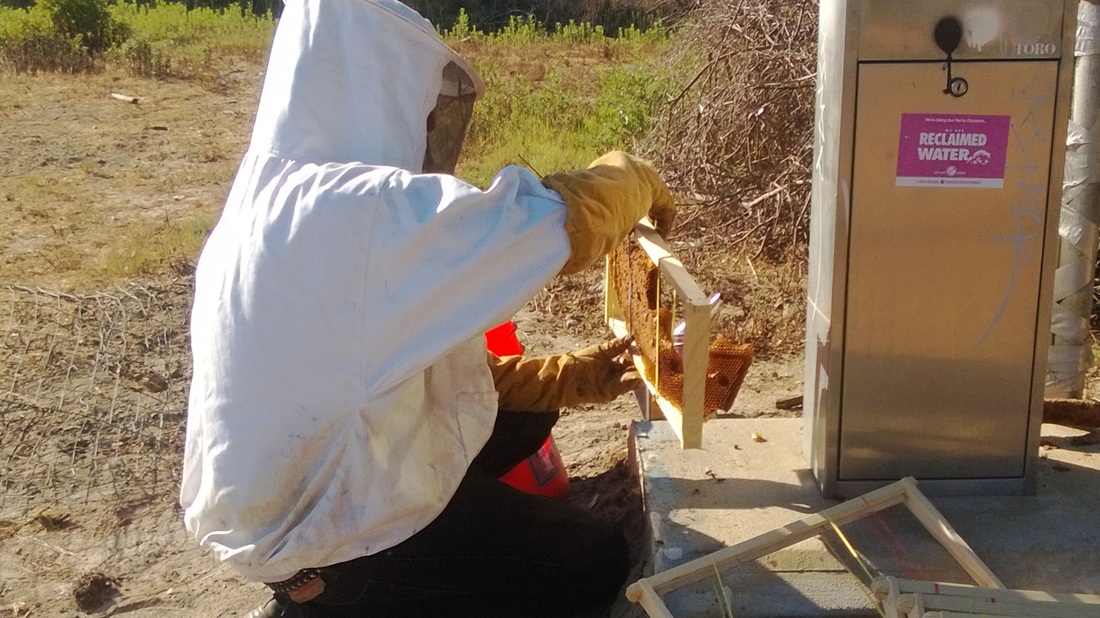
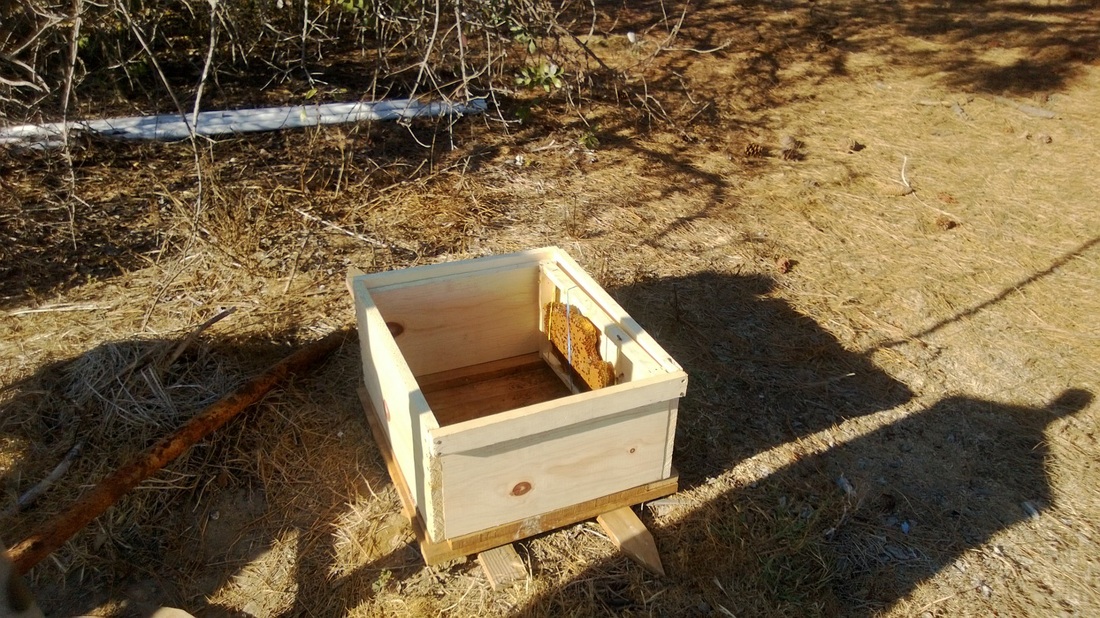
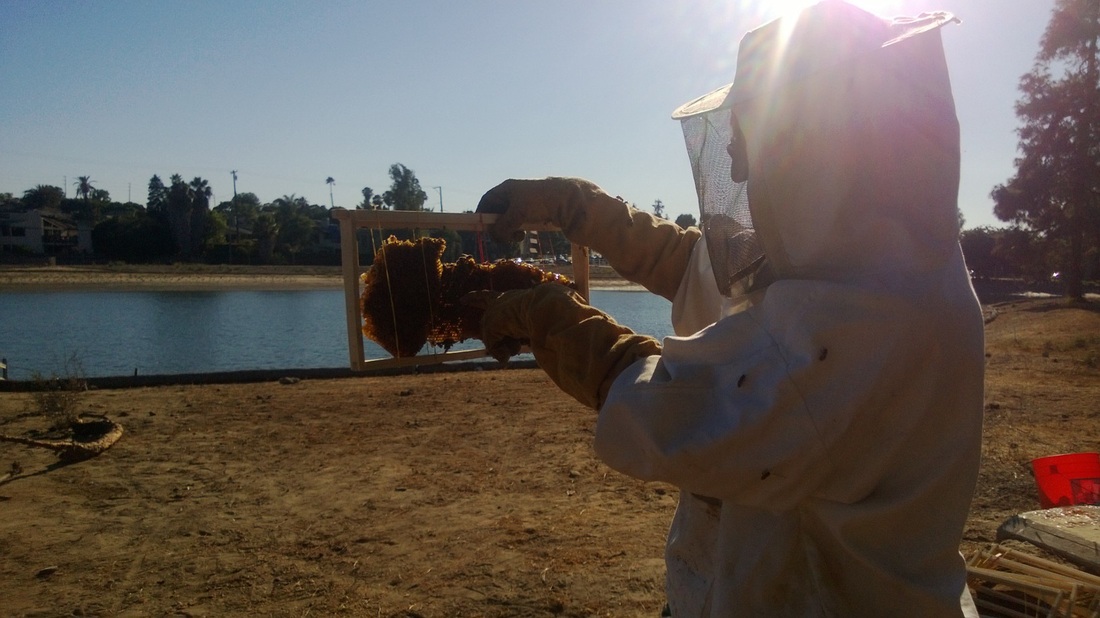
 RSS Feed
RSS Feed